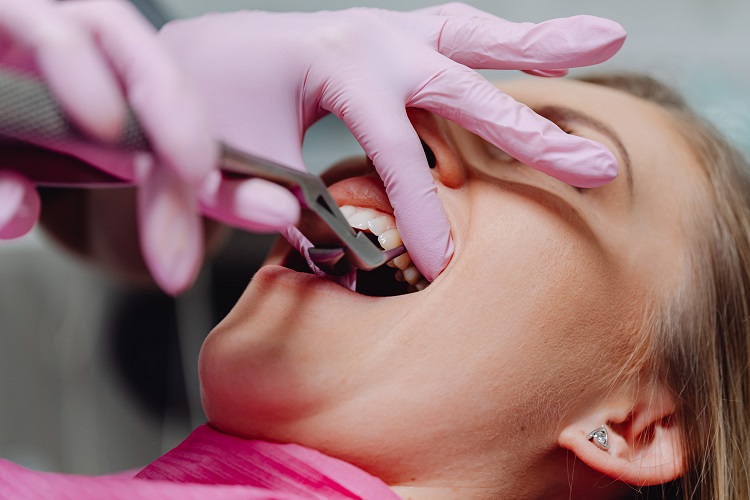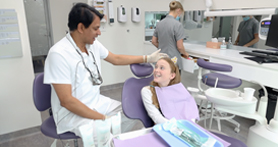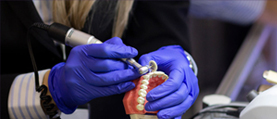The dental health of a person depends on the lifestyle followed by the person, his/her genetics, continued medication, trauma to the oral region and many other factors. Dental or oral health also depends on the condition of the teeth that are already present in the mouth. If there is even a single tooth that is infected or decayed, it can affect oral health adversely.
If you suspect that there is a problem with your teeth, consult a dentist immediately. After the consultation, your dentist will suggest tooth extraction if needed.
There are many situations where a tooth extraction will improve oral health. Teeth play an important role in the overall health of the person, but if a tooth is causing problems, then the dentist will recommend its removal. This will be followed by a tooth replacement procedure to support the oral and dental health of the person.
Tooth extraction promotes oral health
So, let’s now look at how tooth extraction improves oral health.
Ending infection
Infection in the teeth is quite common and if it is not checked, there are great chances of infection/decay spreading from one tooth to another.
Even with regular oral hygiene, the infection might go unnoticed and can lead to this spreading. When the infection spreads from one tooth to another, the oral health gets compromised. When consultation is done at this stage where there are chances of tooth infection spreading from one tooth to another, dentists will suggest a tooth extraction. This will help stop the infection and prevent the dental cavity from spreading.
Healthier teeth
If there is a misalignment in the teeth, it can result in overcrowding of teeth. Teeth get pushed against each other and they overlap one another. These spaces can easily trap food particles between them and create difficulty in cleaning. Due to less than perfect oral hygiene, other dental problems can also occur.
In situations like this, dentists will suggest tooth extraction to correct the alignment. The ‘extra tooth’ will be removed and the remaining teeth will be able to occupy their position in the mouth. Cleaning of the tooth will be easier and the overcrowding of teeth will not be an issue anymore. Tooth extraction will lead to a healthier and cleaner oral region.
End to pain caused by trauma
Trauma to the mouth often results in an oral region suffering immense pain. This can be due to the pressure suffered to the mouth or due to the tooth coming out loose due to the trauma suffered. When emergency dentists examine people who have suffered these conditions, they will suggest removing the tooth to remove the pain and save oral health. The tooth cannot be saved at this point and dentists will suggest removing the tooth and providing a replacement tooth to support the oral health of the person.
Gum diseases
The gum lining may get infected due to unchecked plaque or tartar formation in the teeth. When deposits of plaque remain in the tooth ends, the gum lining also gets affected. They get irritated and inflamed, due to the infection. When the infection is unchecked, it can even lead to the formation of pockets at the base of the tooth. This results in the infection progressing unchecked and the tooth coming out loose as they have lost the support from the infected gum lining. In these situations, along with treating the gum lining, the dentist will also recommend removing the tooth and replacing them so that the infection does not spread further.
Process of tooth extraction
Before the tooth extraction is conducted, the dentist will assess the oral/dental condition of the patient. X-rays will be used to understand the condition of the affected tooth and also the neighbouring areas. The extent of bone damage and interior cell damage will be assessed by the different examinations. Usually, the tooth extraction is conducted under anaesthesia. The dentist will give local anaesthesia to numb the area of tooth extraction. With the use of specialised tools, the damaged/infected tooth is removed.
After the tooth is removed, the tooth socket will be cleaned and disinfected. This will help in preventing further damage to the neighbouring teeth and the infection is contained with this procedure. Dentists will then proceed to place a gauze over the area and ask the patient to apply pressure to help in the clot formation. This will help to hasten the healing process at the site of the tooth extraction. There will be slight bleeding at the area of extraction but this will soon stop and healing will commence.
After tooth extractions, dentists will provide guidance on the do’s and don’ts for easier pain management and healing. They will give analgesics and antibiotics to treat the pain and infection. It is important to follow the guidance given by the dentists as otherwise proper recovery will not take place.




